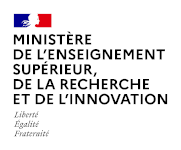Dissemination Information Packages for Information Reuse (DIPIR)
The University of Michigan School of Information and OCLC Research along with their partners the Inter-university Consortium for Political and Social Research, the University of Michigan Museum of Zoology, and Open Context are studying how Dissemination Information Packages (DIPS) can better incorporate information from designated communities to facilitate reuse of digital information. This project, lasting from October 1, 2010 to September 30, 2013, will contribute to digital curation practices through a better understanding of significant properties and representation information and provide models for incorporating this information into implementations pf the Reference Model for an Open Archival Information System (OAIS).
OAIS is an established standard for preservation and curation of digital objects. It covers ingest, archival storage, preservation, and access to digital collections and utilizes a series of ‘packages’: the Submission Information Package (SIP), the Archival Information Package (AIP), and the Dissemination Information Package (DIP) to manage digital data. Most OAIS research has focused on SIPs (Ludäscher, Marciano, Moore 2001; Moore and Smith 2006) and AIPs (e.g., Vardigan and Whiteman 2007; Moore and Smith 2007). There has been no empirical research on DIPS. Pearce et al (2008) acknowledge that there can be differences in the submission and the dissemination information packages; however, the nature of these differences has not been explored. The digital curation literature focuses on preservation activities as a means of making reuse possible; it does not consider metadata specifically to facilitate reuse even though OAIS states that a repository may “make a decision between maintaining the minimum representation information needed for its Designated Community, or maintaining a larger amount of Representation Information that may allow understanding by a larger consumer community with a less specialized Knowledge Base” (Consultative Committee for Space Data Systems 2002, pp. 2–4). Input from designated communities has not been systematically incorporated into digital repositories. This is unfortunate since research on data reuse has begun to identify properties that facilitate reuse of secondary data.
Our research employs mixed methods (both qualitative and quantitative data collection) to investigate the reuse of digital data in three disciplinary traditions (quantitative social sciences, archaeology, and zoology) to identify significant properties. We will then determine how these properties might be expressed as representation information in OAIS. Our central research question is: How does a deeper knowledge of data reuse affect our understanding of significant properties and what does this mean for representation information within OAIS?






